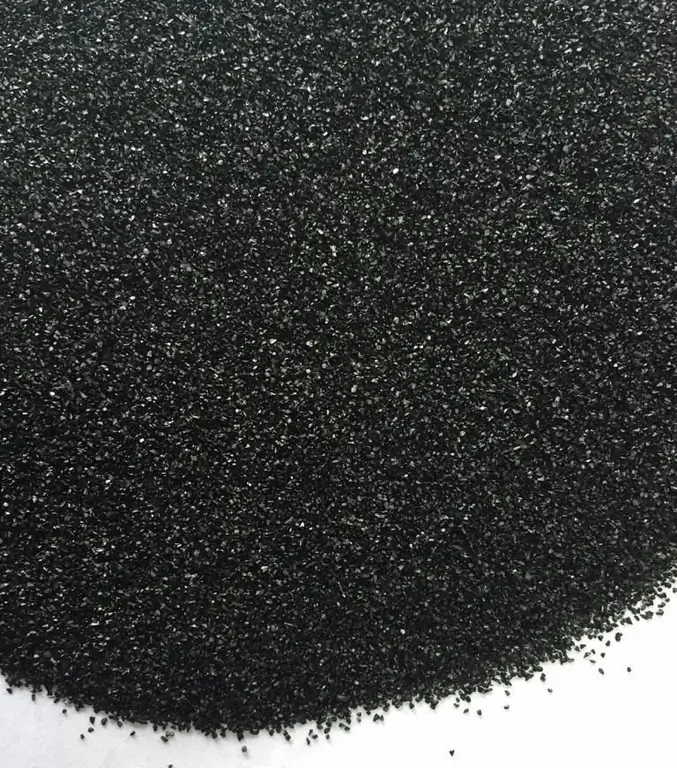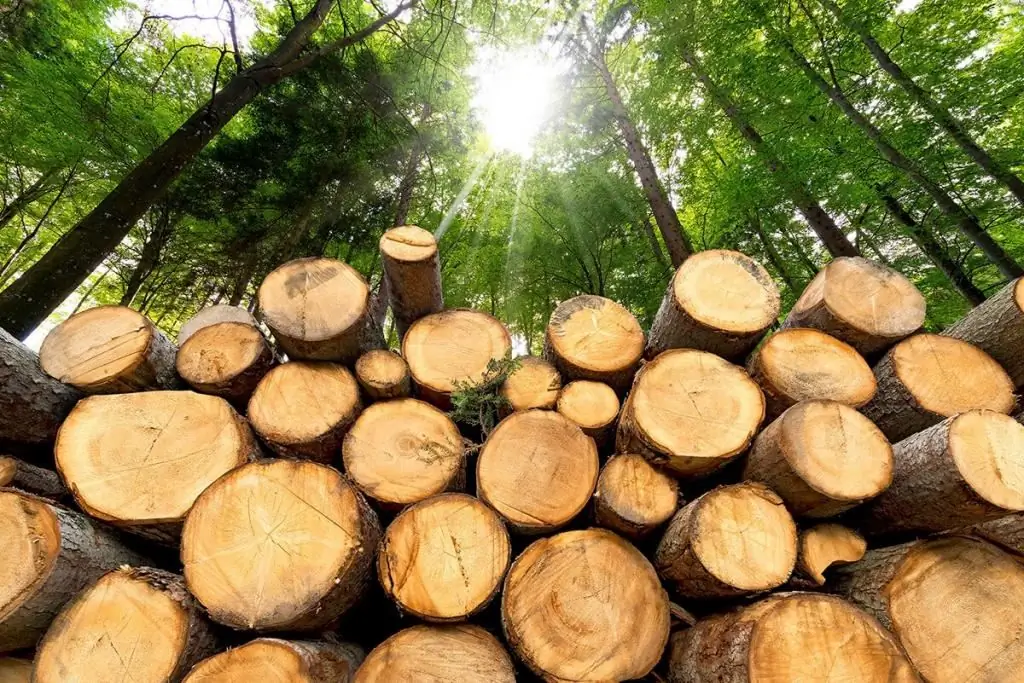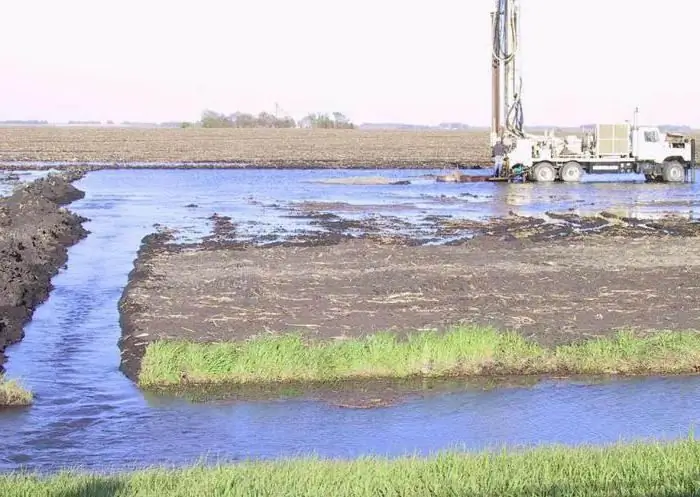2026 Author: Howard Calhoun | [email protected]. Last modified: 2025-01-24 13:10:45
Neutron logging and its varieties belong to the radiation methods of geophysical research. Depending on the type of detected radiation (neutrons or gamma photons), there are several modifications of this technology. Downhole equipment has a similar layout. Neutron logging makes it possible to determine one of the most important indicators of an oil and gas bearing formation - the porosity coefficient, as well as to divide reservoirs by the type of fluids contained in them.
Methods of geophysical surveys
In geophysics, several methods for studying rocks are used, which can be divided into 2 large groups: electrical (electromagnetic) and non-electric. The first group includes the following methods:
- Research with unfocused probes: o method of apparent resistivity; o microprobing; o resistivity; o current logging.
- Focused probe methods: olateral logging; o divergent logging.
- Electromagnetic techniques: o induction logging; o wave electromagnetic logging; o downhole radio wave method.
- Methods for measuring electrochemical activity: o spontaneous orientation potential method; o method of electrode potentials; o evoked potential method.

The second group includes the following technologies:
- Seismoacoustic methods: o acoustic logging (including reflected wave method); o vertical well profiling; o cross-well acoustic transillumination; o seismic.
- Nuclear physics methods.
- Thermal logging.
- Magnetic research methods: o borehole magnetic prospecting; o magnetic susceptibility logging; o nuclear magnetic logging.
- Downhole gravity exploration.
- Gas and mechanical logging.
Radiometric methods
Nuclear physics research methods include a large group of technologies:
- gamma ray logging (measurement of natural radioactivity);
- gamma-gamma-method;
- neutron methods;
- tagged atom technology;
- activation gamma method.
These methods are a powerful tool for studying the geological formations intersected by a well. They are based on measuring the parameters of ionizing radiation emitted by the nuclei of atoms of substances contained in the rock. Like acoustic logging, radiometric methodscan be divided into methods that measure natural and artificial fields (radiation). As radioactive particles, those that have the highest penetrating power are used - neutrons (n) and gamma quanta.
Essence of neutron technologies
Neutron logging is one of the methods of geophysical research, which is based on the impact of a fast neutron flux. As a result, they are slowed down, scattered and absorbed in the rock.

Downhole probes for neutron logging contain the following main units:
- radioactive radiation source;
- particle counter (n or gamma quanta);
- filters that exclude direct radiation from the source to the detector.
Neutron characteristics of rocks
When hitting rocks, fast neutrons slow down and lose energy due to interaction with atoms. In this state, they dissipate in matter and are captured by the nuclei of atoms of chemical elements in fractions of milliseconds.

The most intense moderator is hydrogen. The short path that a neutron travels before reaching a thermal state is characteristic of rocks with a high hydrogen content (oil- and water-saturated reservoirs, minerals, which contain a lot of water of crystallization).
The following neutron characteristics of rocks are distinguished:
- The way to slow down fastneutrons to a thermal state (in which the energy of a particle approaches the value of the average kinetic energy of the thermal motion of molecules and atoms of the rock).
- Diffusion length (the path from the point of appearance of a thermal neutron to its absorption).
- The lifetime of particles in a thermal state.
- Scattering index in rock.
- Particle migration length (total distance traveled during deceleration and diffusion).
In practice, these properties are estimated using the conditional neutron porosity coefficient.
Varieties
Neutron logging includes several types of surveys that differ in 2 main criteria:
- Radiation source operating mode: o stationary methods; o impulse methods (used mainly after well casing).
- The nature of the recorded secondary radiation: o n-neutron logging (measure the number n of rock substances scattered by atomic nuclei); o neutron gamma method (ɣ radiation resulting from the capture of n); o neutron activation logging (ɣ-radiation of artificial radionuclides released when n is absorbed).

Logging modification depends mainly on the type of detector (helium, scintillation, semiconductor counters) and the filters surrounding it. Stationary methods are included in the complex of mandatory studies when drilling exploratory wells.
Neutron-neutron technique
This method of geophysical research is based on the firstneutron characteristics of rocks and has 2 varieties: registration of thermal or epithermal neutrons. The energy of the latter is somewhat greater than the thermal energy of atoms.
Hydrogen among all elements is anomalous not only in terms of scattering geometry, but also in terms of the energy loss of a neutron upon collision with it. Gas reservoirs are characterized by higher readings than water and oil saturated reservoirs, since the specific hydrogen content in them is lower.

The greater the porosity of the oil and gas reservoir, the lower the readings of the epithermal n method. The data obtained during the neutron-neutron logging, allow you to calculate the porosity factor. Due to the reduced sensitivity of epithermal particle counters, this method has a lower statistical accuracy.
Thermal neutrons are removed from a radioactive source for a longer path than epithermal ones, and their average lifespan is determined by an inversely proportional relationship with respect to the content of chlorine, boron and rare earth elements. Chlorine is present in formation waters of high salinity. Oil and gas-bearing rocks are characterized by a longer lifetime of thermal particles. This property is the basis of the principle of the neutron-neutron method of measurements by thermal n.
Neutron gamma ray logging
Neutron gamma research measures the gamma radiation that is generated when thermal n is captured. Aquifers are distinguished by large readings, compared with oil-bearing ones, by 15-20%(with the same porosity). A significant difference from previous methods is that the readings of this technology increase with an increase in the salinity of the drilling fluid.
Since neutron-gamma logging also registers natural radioactive background in rocks, correction factors are introduced to interpret the results. In oil and gas wells, this method is used for the same purposes as the neutron-neutron technique - the separation of rocks according to different hydrogen content, the determination of the porosity coefficient, the identification of gas-liquid and water-oil contact in a cased well. There are also combined methods that detect n and gamma radiation, which improves the accuracy of measurements.
Pulse Technology
Pulse logging is a type of neutron research method based on the emission of neutrons over short time intervals (100-200 microseconds). There are also 2 modifications of this technology:
- registration of thermal n;
- measurement of ɣ-quanta of radiation capture.

Registering one of these parameters for 2 time values, one obtains the average lifetime of thermal neutrons in the reservoir rocks. This allows you to judge the presence of certain chemical elements. Aquifers have significantly lower readings for longer time delays than oil and gas reservoirs.
Recommended:
Analysis techniques: classification, methods and methods, scope

Today, among the analytical tools of business, a magnificent collection of methods and techniques of economic analysis has gathered. They differ in goals, grouping options, mathematical nature, timing, and other criteria. Consider the techniques of economic analysis in the article
Analysis of shares: methods of conducting, choosing methods of analysis, tips and tricks

What are stocks. How to analyze stocks, what sources of information are used for this. What are the risks associated with buying shares? Types of stock analysis, what formulas are used. What are the features of the analysis of shares of Russian companies, tips and tricks for collecting information and analyzing shares
Wastewater treatment from oil products: methods, methods and efficiency

At the moment, technologies and means, methods and units, thanks to which wastewater treatment from oil products is carried out, are among the most important means of ensuring environmental protection. In our country, for about five years now, legislatively fixed standards for the purification of liquids discharged by enterprises have been in force. Documentation on this issue establishes the quality and volume of water that can be produced by industrial facilities
Logging is Logging in Russia

Forest is one of the richest resources in Russia, which is confirmed by the high volumes of its exports. By the way, products manufactured on the basis of this raw material ranks seventh in the industrial sector. The process of manufacturing products of this kind begins with logging - this is a key branch of the national economy, providing for an extensive range of technological and organizational measures
Well development: methods, process description, safety. Well repair

The article is devoted to the development of wells. The methods, features and nuances of the implementation of this event, as well as security measures and repair work are considered

